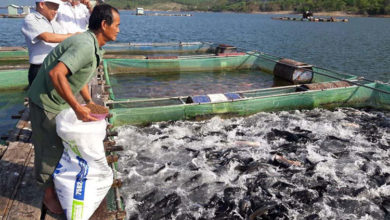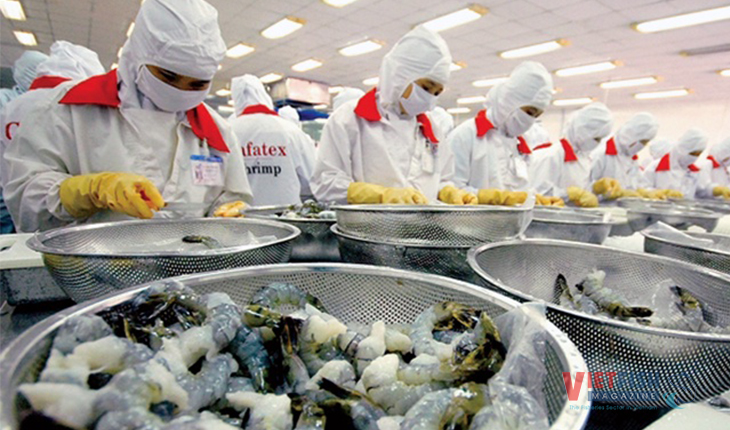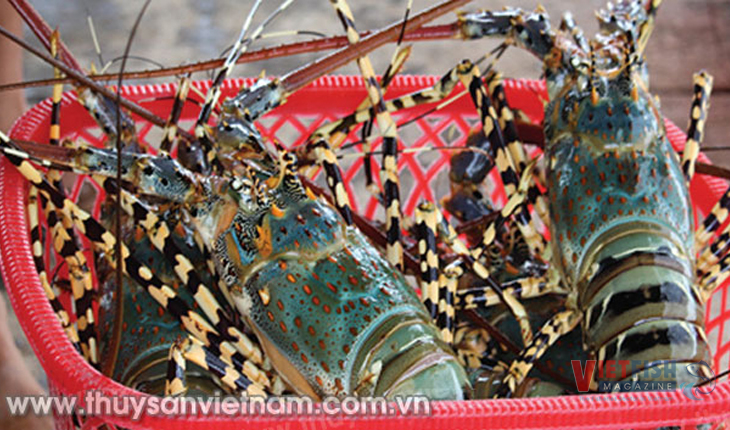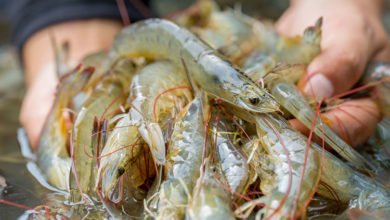Shrimp exports forecasted to continue to rise late this year
The Agency of Foreign Trade (under the Ministry of Industry and Trade) forecasts that Vietnam’s shrimp exports will continue to rise in the last months of this year due to global short supply, especially in India. Meanwhile, shrimp exports to the EU are enjoying benefits at the entry into force of EVFTA.
According to statistics by the General Department of Vietnam Customs, Vietnam brought $391 million from exporting 42.9 thousand tons of shrimp, up 4.8% in quality and 11.9% in value compared to the same period last year.
It has been three months since shrimp exports rose after stagnant business in May 2020. In the first eight months of 2020, as many as 252.6 thousand tons of shrimps were exported, valued at $2.3 billion, up 6.4% in quantity and 8.5 in value as compared to the same period last year.
In August, the exporting price of Vietnamese shrimps ranged at 9 USD/kg on average, down 0.09 USD/kg from the previous year but up 0.58 USD/kg compared to the same period last year. This month, shrimp exports had seen a sharp increase for the third consecutive month with a quantity of 10,137 tons, valued at $109.03 million, up 25.9% in quantity and 28.7% in value as compared to the same period last year.
In the first eight months of 2020, shrimp exports to the UK reached 50.07 thousand tons, valued at $541.56 million, up 26% in quantity and 31.7% in value compared to the same period last year. Exports to the EU bounced back in August, up 9.5% in quantity and 15.6% in value as compared to the same period last year.
The entry into force of EVFTA has been supporting Vietnam’s shrimp exports to this market. Sales of shrimps to Korea, the UK, Australia and Canada were recorded positive in August as compared to the same period last year, while exports to Japan and China decreased.
According to forecast by the Agency of Foreign Trade, Vietnam’s shrimp exports will continue to rise late this year due to global short supply, especially in India. Plus, shrimp exports to the EU are enjoying the benefits of EVFTA.
VFM






